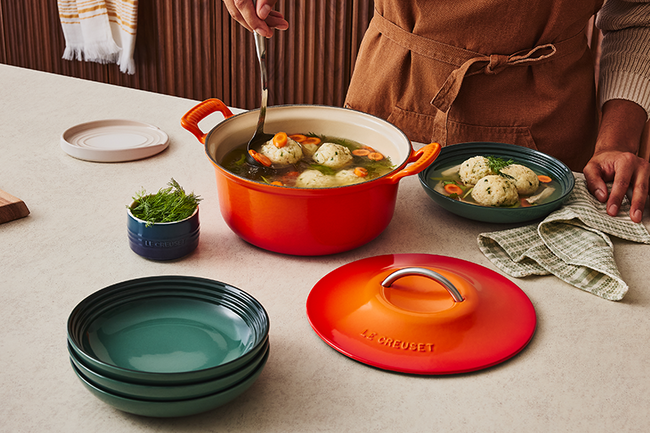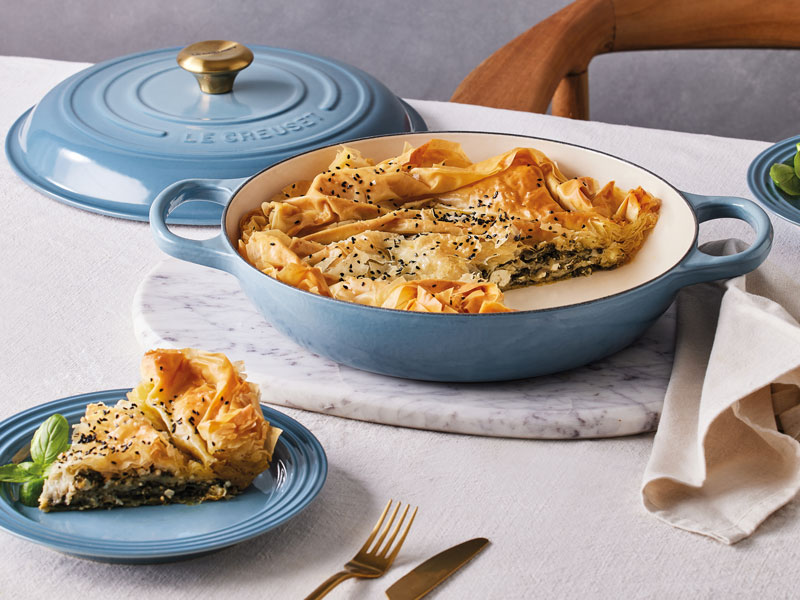When it comes to versatile cookware, the debate often circles around the cast iron braiser vs Dutch oven. Both are essential in a well-equipped kitchen, yet each serves unique purposes. Understanding their differences can help you decide which one suits your cooking needs better.

Understanding the Basics
What is a Cast Iron Braiser?
A cast iron braiser is a shallow pan with a wide base and a domed lid. It is perfect for browning meat, simmering, and even baking. Its design allows for maximum surface area contact, making it ideal for dishes that require slow cooking and even heat distribution.
What is a Dutch Oven?
A Dutch oven, on the other hand, is a deep, heavy pot with thick walls and a tight-fitting lid. It is excellent for stews, soups, and baking bread, thanks to its ability to maintain consistent temperatures and trap moisture.
Comparing Features
Design and Construction
Both cookware are typically made from cast iron, which is excellent for heat retention. However, the braiser’s shallow design makes it suitable for recipes that require more surface contact, like searing and sauting. The Dutch oven’s depth makes it perfect for hearty meals that require more liquid.
Versatility in Cooking
While both are versatile, the braiser is better for recipes like roasts and casseroles. In contrast, the Dutch oven excels in slow-cooked meals like bolognese or chili. For more insights on how to use a braiser, check out this braiser guide.
Cooking Techniques
Braising
Braising is a technique where food is first browned and then cooked slowly in liquid. The cast iron braiser is specifically designed for this method, making it a favorite for chefs who enjoy creating tender, flavorful dishes.
Stewing and Baking
The Dutch oven is renowned for stewing, thanks to its capacity to hold and circulate heat evenly. It’s also a fantastic tool for baking artisanal bread, which requires a humid environment.
Maintenance and Care
Seasoning Your Cookware
Both the braiser and Dutch oven benefit from regular seasoning to maintain their non-stick properties and prevent rust. For tips on maintaining your braiser, visit this seasoning guide.
Cleaning Tips
Cleaning cast iron cookware requires special care. Avoid using soap or abrasive materials. Instead, use warm water and a soft brush to clean, then dry thoroughly to prevent rusting.
Choosing the Right Cookware
Consider Your Cooking Style
If you frequently prepare meals that require slow cooking and large quantities, a Dutch oven might be more suitable. However, if you prefer making quick, flavorful meals, a cast iron braiser could be the better choice.
Space and Budget
Consider the size of your kitchen and budget. A braiser requires less space due to its shallow design, whereas a Dutch oven might be more of an investment but offers broader cooking options.
Conclusion
The choice between a cast iron braiser vs Dutch oven ultimately depends on your cooking preferences and kitchen needs. Both offer unique advantages that can enhance your culinary experiences.

FAQs
Can a braiser replace a Dutch oven?
While a braiser can perform many functions of a Dutch oven, it may not be suitable for recipes requiring deep liquid cooking.
Is cast iron better than other materials?
Cast iron is favored for its heat retention and durability, making it ideal for various cooking techniques.
How should I care for my cast iron cookware?
Regular seasoning and proper cleaning without soap are essential for maintaining cast iron cookware.
For more information on versatile cooking, you might find this external resource from America’s Test Kitchen helpful.
This article contains affiliate links. We may earn a commission at no extra cost to you.

